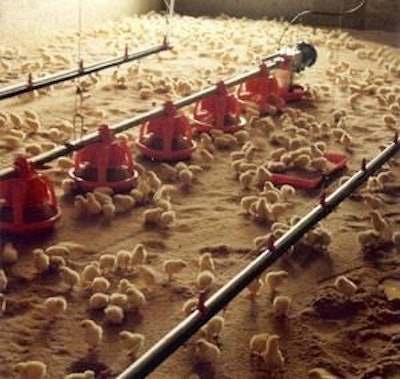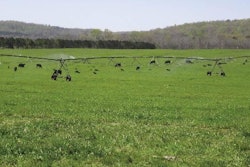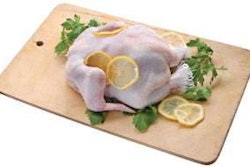
Research on alternative bedding materials has been extensive over the years! Malone (1992) and Grimes et al. (2002) are among many who have reviewed the literature on alternative bedding materials. These alternative materials can be grouped into four general categories wood, plant, earth and recycled waste products.
Due to physical, chemical and biological properties, plus cost, availability, compatibility with handling/production practices, and logistical issues, only a limited number of these products have been successful substitutes for good quality pine shavings and sawdust. Particle size, moisture content and microbial population, however, can have a significant impact of the quality of pine shavings and sawdust litter.
A brief review of the literature indicates there have been shortages of bedding materials for the broiler industry and escalating costs since the 1950s. This situation has often occurred in the more concentrated broiler producing areas such as the Delmarva Peninsula, located along the east coast incorporating portions of Delaware, Maryland and Virginia.
Supply and demand
With higher demand by the poultry and other competing industries for conventional bedding materials (e.g. pine shavings and sawdust) and decreasing supplies, the situation has become critical in some regions. Part of the issue relates to seasonal demand as a result of the high frequency of spring cleanouts. During this period, demand may exceed supply, creating concerns that any temporary disruption of supplies during this peak period can be a problem.
There are also concerns that the downturn in the construction industry will reduce output of shavings and sawdust. The long-term implications of urban sprawl and competing uses (e.g. energy) for bedding may pose the greatest risks.
To retain a supply of quality pine shavings and sawdust, broiler producers should be prepared to pay higher prices. How much is too much for bedding? In poultry producing regions facing shortages, the cost of bedding is at times twice that of other regions and quality may be inferior.
Delaying cleanout
Bedding availability challenges in the Delmarva region provide an example. Prior to 1970, the Delmarva poultry industry had a once-per-year cleanout program. With adoption of confinement brooding, litter amendments, nipple drinkers, improved ventilation systems and improved health programs, the Delmarva industry began using litter for two or more years before a total cleanout.
During an economic downturn in the poultry industry in the 1990s, a decision was made by some to delay cleanouts as a short term effort to reduce costs. With large inventories of shavings and sawdust, some sawmills and bedding suppliers were forced to seek other outlets for their product. Some bedding materials are now used by the energy, landscaping and equine industries. At the same time, technology in the saw mills has changed (e.g. band saws) further reducing output.
The situation in the past four years, however, has become critical. During this period the region has seen closure of 50 percent of local sawmills due to competition from lumber imported from Canada, higher prices and decreased acreage of marketable trees. Urban encroachment has also contributed to changes in landownership creating a different objective for use of forestland.
Bedding options
Different strategies have been implemented to address this shortage. In addition to locking-in pine shavings and sawdust supplies with long-term contracts, some have opted to transport bedding materials into the area from distances up to 250 miles. Selective hardwood sawdust products (i.e., drier materials and from poplar trees) are also being used to offset the deficit. Some bedding suppliers are supplementing inventories using grinders and shaving mills to process pine trees and chips into sawdust-like and shavings products.
In an effort to use less bedding depth following total cleanout while maintaining quality litter, some producers prefer to start with the driest material available and implement management strategies to minimize litter moisture and cake removal.
Based on the lessons learned on Delmarva, it may be advisable for the poultry industry to work closely with its growers, haulers and bedding suppliers to maintain a consistent quantity of quality pine shavings and sawdust. Although there may be some options for local alternative bedding materials, maintaining current bedding inventories and managing those for optimum performance should be a high priority.





.jpg?auto=format%2Ccompress&fit=crop&h=167&q=70&w=250)











